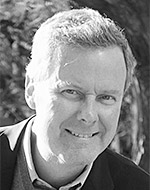As a part of our talent acquisition engagements, we ask our clients how they define “top talent” and how they would assess those traits in the interview process. Reflecting on the insightful comments we hear every day, we thought there would be great value in a new blog in which senior executives/thought leaders share their “Take on Talent.”
This is the third in a series of blogs/interviews with senior executives who are thought leaders in the areas of Talent Acquisition, Career Development and Leadership who will share their perspectives on this ever present question.
 Andy W. Mattes was named president and chief executive officer and a member of the board of directors of Diebold, Incorporated in June 2013. He is responsible for driving the company’s global strategies and performance in the integrated self-service, security and services business.
Andy W. Mattes was named president and chief executive officer and a member of the board of directors of Diebold, Incorporated in June 2013. He is responsible for driving the company’s global strategies and performance in the integrated self-service, security and services business.
With more than 25-years of experience in corporate management, executive oversight, mergers and acquisitions, growth strategies and equity management, Mattes has a strong record of driving growth and improving profitability in large, global businesses in the information technology and telecommunications industries – primarily with Hewlett-Packard Co. (HP) and Siemens AG. Mattes most recently served as senior vice president, global strategic partnerships at Violin Memory, a manufacturer of flash memory computer storage systems. Continue reading →








 By Sramana Mitra
By Sramana Mitra